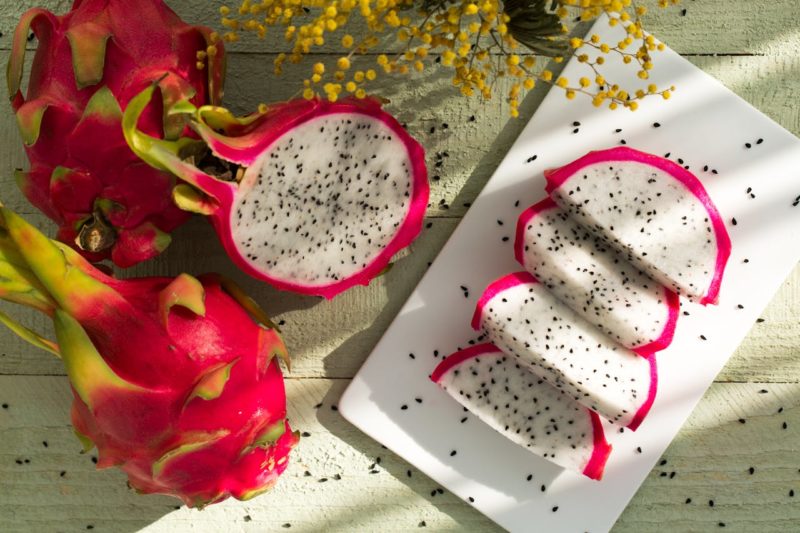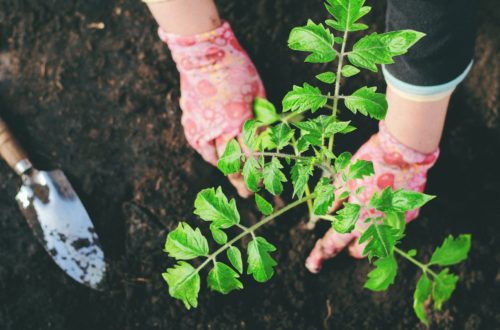Growing Unique Fruits and Vegetables: A Guide to Cultivating Rare and Exotic Produce in Your Garden

Are you tired of the same old tomatoes, cucumbers, and lettuce from your garden? If you’re looking for a way to make your gardening efforts more exciting and rewarding, why not try growing unique fruits and vegetables? Adding unusual, rare, and exotic varieties to your garden not only enhances your meals but also supports biodiversity and can be a fun challenge for any gardener.
Why Grow Unique Produce?
Growing special and unique fruits and vegetables can be a wonderful way to spice up your garden and your diet. These varieties can introduce new flavors, colors, and textures to your meals. Heirloom vegetables, for instance, often have a richer taste and more diverse appearance than their commercially grown counterparts. Exotic fruits such as dragon fruit, starfruit, or purple cauliflower can add visual appeal and nutritional benefits to your diet.
Unique crops also tend to be more resilient in certain conditions, giving you a better harvest while reducing your environmental footprint. By growing your own food, you can lessen your reliance on store-bought produce, making your diet more sustainable and reducing food miles.
Top Unique Varieties to Try
If you’re new to growing rare crops, here are some fun and rewarding varieties to consider:
- Purple Carrots: Packed with antioxidants, purple carrots bring a pop of color to your meals and grow just as easily as regular carrots.
- Dragon Fruit: A stunningly exotic fruit that grows on a cactus. With the right conditions, you can grow this tropical fruit in a warm climate or indoors with proper care.
- Cucamelons: Also known as “mouse melons,” these tiny fruits look like mini watermelons and taste like cucumbers with a hint of lime. They’re easy to grow and perfect for containers.
- Romanesco Broccoli: This striking vegetable is known for its vibrant green color and fractal-like spirals. It’s a great conversation starter at the dinner table!
- Heirloom Tomatoes: With varieties like Cherokee Purple or Green Zebra, heirloom tomatoes come in all shapes, colors, and flavors, offering an entirely new taste experience compared to standard red tomatoes.
Growing Tips for Success
When it comes to growing these unique fruits and vegetables, success lies in understanding their specific growing needs. Each variety thrives under different conditions, so it’s essential to consider the location, climate, and environment you’re working with.
For instance, tropical fruits like dragon fruit and starfruit prefer warm, humid environments and can thrive in regions with mild winters. If you live in a cooler climate, you can grow them indoors or in a greenhouse. Conversely, crops like purple carrots and Romanesco broccoli prefer cooler temperatures, making them perfect for spring or fall gardens in temperate zones. Container gardening can help you control growing conditions, making it easier to accommodate more exotic varieties, even in small spaces or less-than-ideal climates.
It’s crucial to choose the right soil type, provide adequate drainage, and keep an eye on watering requirements, as these exotic varieties often have different needs than more common crops. For example, cucamelons are drought-tolerant and thrive in well-drained soil, while dragon fruit requires a cactus mix to prevent overwatering.
Different Environments, Different Harvests
One of the joys of growing unique produce is that different climates and regions can yield a diverse range of crops. For example, Mediterranean climates are great for citrus fruits, while cooler regions may excel in growing heirloom varieties of potatoes or carrots. If you live in an area with hot summers, consider trying heat-tolerant crops like okra or bitter melon, whereas those in cooler regions might have better luck with root vegetables and leafy greens. By working with your environment and selecting plants suited to your local conditions, you can successfully cultivate unique fruits and vegetables, even if they’re not native to your region.
The Environmental Benefits of Growing Rare Varieties
Growing unique and diverse crops also benefits the environment. Introducing lesser-known varieties into your garden promotes biodiversity, which helps build a more resilient ecosystem. Diverse plantings can attract a wider range of pollinators and beneficial insects, reducing the need for chemical pesticides. In addition, many heirloom or exotic crops are naturally pest-resistant, making them a healthier choice for your garden.
Additionally, cultivating your own rare fruits and vegetables can reduce your carbon footprint. By harvesting fresh produce from your backyard, you eliminate the need for long-distance shipping, which is often required to get exotic produce into grocery stores. Gardening at home also allows you to control the growing process, ensuring organic and sustainable practices.
Cooking and Enjoying Your Unique Harvest
Once you’ve successfully grown your fruits and vegetables, it’s time to enjoy them! These crops can elevate your cooking to a whole new level. Try roasting Romanesco broccoli with garlic and olive oil for a visually stunning side dish, or add cucamelons to your summer salads for a fresh twist. Heirloom tomatoes can be sliced into sandwiches or made into sauces that burst with complex flavors.
By growing special produce, you not only expand your culinary horizons but also deepen your connection with the food you eat. Plus, there’s a special kind of joy in sharing an unusual, homegrown fruit or vegetable with friends and family.
Conclusion
Growing unique fruits and vegetables is a rewarding way to bring variety, flavor, and sustainability to your garden. Whether you’re in a tropical climate, a cooler region, or somewhere in between, there are rare and exciting crops to discover. By selecting the right varieties for your location and environment, and caring for them with attention to their specific needs, you can enjoy a bountiful and diverse harvest that goes far beyond the ordinary.
Would you like to receive similar articles by email?





